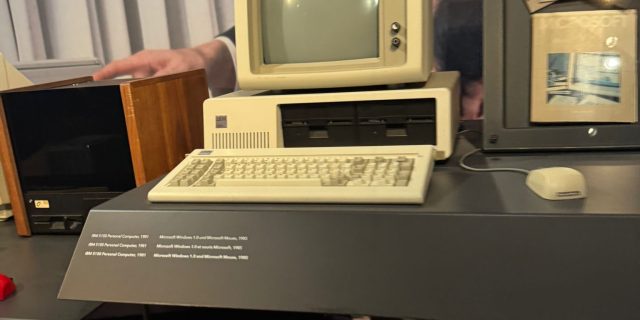Answering the question of « What was the first » Computer is surprisingly difficult. There are several ways people interpret the word « Computer », with many misunderstanding what it really defines.
Before the thought of a computing device was conceived, a « Computer » was a job title for a person who computes. For the purpose of brevity however, we won’t focus on this definition.
A computer is defined as « a machine that can automatically complete arythmetic or logical operations ». By this definition, any device with a processor is a computer. Everything from a Laptop to an iPod can be classified as such.
In order for a machine to be defined as a computer, it has to pass certain checks to be considered « turing complete ». These checks were defined by the « father of theoretical computer science », Alan Turing. He defined a concept later named the « Turing Machine » in 1936, which can be considered a model of a general-purpose computer, although a Turing Machine was never actually built around that time.
Charles Babbage, a British mathematician, philosopher, inventor and mechanical engineer from the 19th century, first devised a machine later defined a a mechanical computer. It is this invention that dubbed him the « Father of the computer ». His invention, the « Analytical Engine », incorporated an arithmetic logic unit, control form in the form of conditional branching and loops, and integrated memory. These features make the Analytical Engine, first described in 1837, turing-complete by modern standards, although, like many of Babbage’s inventions, it was never actually built during his lifetime.
Konrad Zuse, a German civil engineer, computer scientist, inventor and businessman, designed and built the first programmable computer, the Z3, under the German state in 1941. Later tests revealed that the machine was turing-complete, although it only meets the definition by speculatively computing all possible outcomes of a calculation. The Z3 was unfortunately destroyed during an allied bombing on Berlin in 1943. A fully functioning replica of the machine was built in 1963 by Zuse’s company, which is on permanent display in the Deutsches Museum.
To help in the cryptoanalysis of the Lorenz cipher in WW2, a set of computers commonly refered to as « Colossus » were built between 1943 and 1945. It used thermionic valves (vacuum tubes) to perform Boolean counting operations. It is thus regarded as the the world’s first programmable, electronic, digital computer, although it was programmed by switches and plugs and not a stored program. It was designed by Tommy Flowers. Although Alan Turing’s use of probabilty in cryptoanalysis contributed to its design, it is not considered turing-complete.
The first machine to be classified as turing-complete was the ENIAC (« Electronic Numerical Integrator ») in 1945. It was the first programmable, electronic, general-purpose digital computer to ever exist. Although other computers had some of its features, the ENIAC was the first to possess them all. It was designed by John Mauchly and J. Presper Eckert of the University of Pennsylvania and able to solve « a large class of numerical problems » though reprogramming.
When people say the word « computer » however, many people think of the « Personal Computer ». Under this definition, the first Personal Computer was the Kenbak-1, designed in 1971 by John Blankenbaker. It did not posess a CPU and was instead based purely on small-scale integration TTL chips. It cost 750 US-Dollars at the time of release. Less than 50 machines were ever built before production stopped in 1973 as Kenbak Corporation, the company behind the device, went under and was taken over by CTI Education Products Inc, who rebranded the Kentak-1 as the 5050, though sales remained sparce. Today, only 14 Kenbak-1s are known to exist worldwide, in the hands of various museums and collectors.


